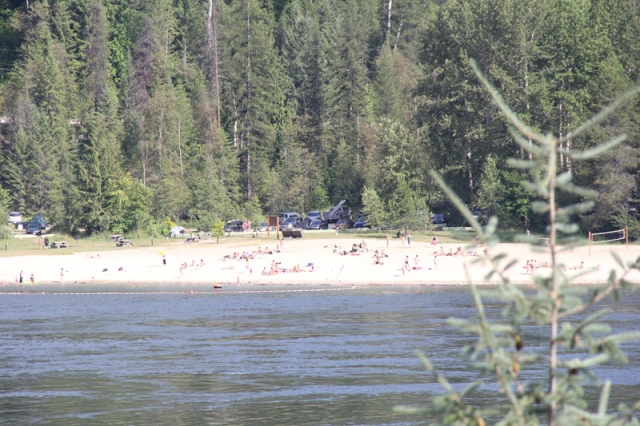Dryer conditions expected as the West Kootenay unofficially welcomes summer
Canada Day 2013 saw new temperature highs around the province according to Environment Canada, with new records set in nearly a dozen B.C. communities.
However the West Kootenay was spared any new records as the thermometer pushed into the low 30’s during the holiday weekend.
“It was not as hot as it could have been,” said Ron Lakeman, weather forecaster for the Southeast Fire Centre in Castlegar.
“It was 32 C in Castlegar (Monday) and 34 C in Nelson,” Lakeman added. “Right now the longer range guide is suggesting for July and August to be warmer than normal.”
Prince George, Dawson Creek, Pitt Meadows and Whistler set new records during the holidays as summer finally arrived.
Ironically, Lytton, traditionally the hotspot in the province was hot — checking in at 40.5 C — but was not a record. The current record is 41.7 set in 1942.
The warmer temperature is good news now that school is out for the unofficial start of the summer vacation season.
Especially after for the fourth consecutive year, the West Kootenay witnessed an increase in the amount of precipitation recorded during June.
“The 105.4 millimetres of rain this month was 160% of the normal June rainfall but less than half the record maximum amount (227.7 mm) received during June 2012,” Lakeman explained.
Lakeman said most of that rain came during storms from June 18-20 when the region saw an accumulation of 62.4 millimetres.
This was due to a large upper low pressure slowly tracked eastward just south of the Canada/USA border.
“The one day rainfall of 46.0 millimetres on June 19 is a new one day maximum rainfall record for the month of June,” he said. “The previous greatest one day June rainfall was 44.2 millimetres from 1986.”
The massive amount of precipitation sparked widespread flooding in the North Kootenay Lake region, in and around Kaslo and Meadow Creek, as well as the East Kootenay and Calgary.
In 2012, the rains continued to soak the region right through most of July before subsiding in August.
Lakeman said forecast models show July 2013 to be dryer, although balance of precipitation for the month of July to be closer to normal.
August and September will be on the dry side, similar to 2013.
“June is the wet month,” Lakeman said.
“July is kind of the transition period and then we get into more classic, dryer weather in August.”
“But that’s the general prediction,” Lakeman added.
“Exactly how it plays out is very difficult to say.”

























